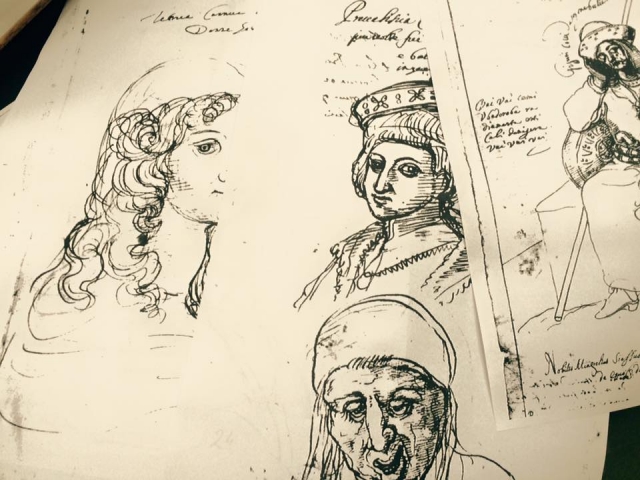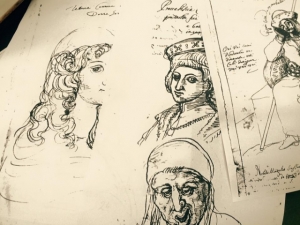Italian Missionary’s Pen-and-Ink Sketches Now in Tbilisi
Pen-and-ink narrates the history of Georgia in the 17th century and the twenty-five-year stories of Sicilian Missionaries in Georgia are now available for the public to sample in Tbilisi.
Georgian Art Palace Director announced that the National Library of Ireland gave the Palace copies of the pen-and-ink sketches painted by Italian missionary Teramo Christopher de Castelli in the 17th century, when he traveled in Georgia.
From today, people in the Sicilian city Palermo and Georgian capital city Tbilisi have a chance to see the 17th century sketches and illustrations by the Italian missionary of both places.
“This unique collection of Castelli’s work encompasses paintings that have not been published yet. My aunt Medea Kalandia has funded the creation of the copies of the album,” head of Georgia’s Art Palace Giorgi Kalandia said.
Teramo Cristoforo de Castelli was an Italian missionary from Genoa’s noble family. He arrived in the Caucasus in 1632 with a group of missionaries and spent twenty-two years in Georgia. During his journey he kept a detailed sketchbook throughout his travels between Catholic missions in Georgia’s western region of Samegrelo, then an independent kingdom.
He left seven volumes of travel notes and pen-and-ink sketches and other illustrations, mainly of the people and landscapes of Georgia.
This manuscript was discovered and delivered to the municipal library of Palermo by the priest Gioacchino di Marzo in 1878.
The 17th century’s seven albums with thousands of illuminated papers and handwritten reports had been forgotten, until the priest Gioacchino di Marzo found them in 1878 in the Libreria Comunale of Palermo, referred to formerly as the House of Theatins and saved them.
The Georgian public learnt about the albums only at the beginning of the 20th century when Georgian catholic Mikhail Tamarati found the albums in Palermo, photographed half of the photos and sent them to Georgia in 1910, where they are kept at the National Centre of Manuscripts.
The albums revealed not only the faces of Georgian kings which were unknown before, but also the type of costumes of that time and a lot of information in different fields such as art, history, geography, ethnography and local life.
In the period when Georgia became part of the Soviet Union, the authorities prevented scientists of the time from going to Western Europe to study the albums.
Consequently, they based their research on the photos but not the original albums and the researches at the time did not hold accurate information about the albums.
Several Georgian and Italian scholars studied the albums from 1970 to 1990 and published only part of the albums, however, the studies were not without inaccuracies.
Currently, these precious art works of the Italian missionary are in Tbilisi and everyone can go and see them at the Georgian State Museum of Theater, Cinema, Music and Choreography.
Tamar Svanidze











